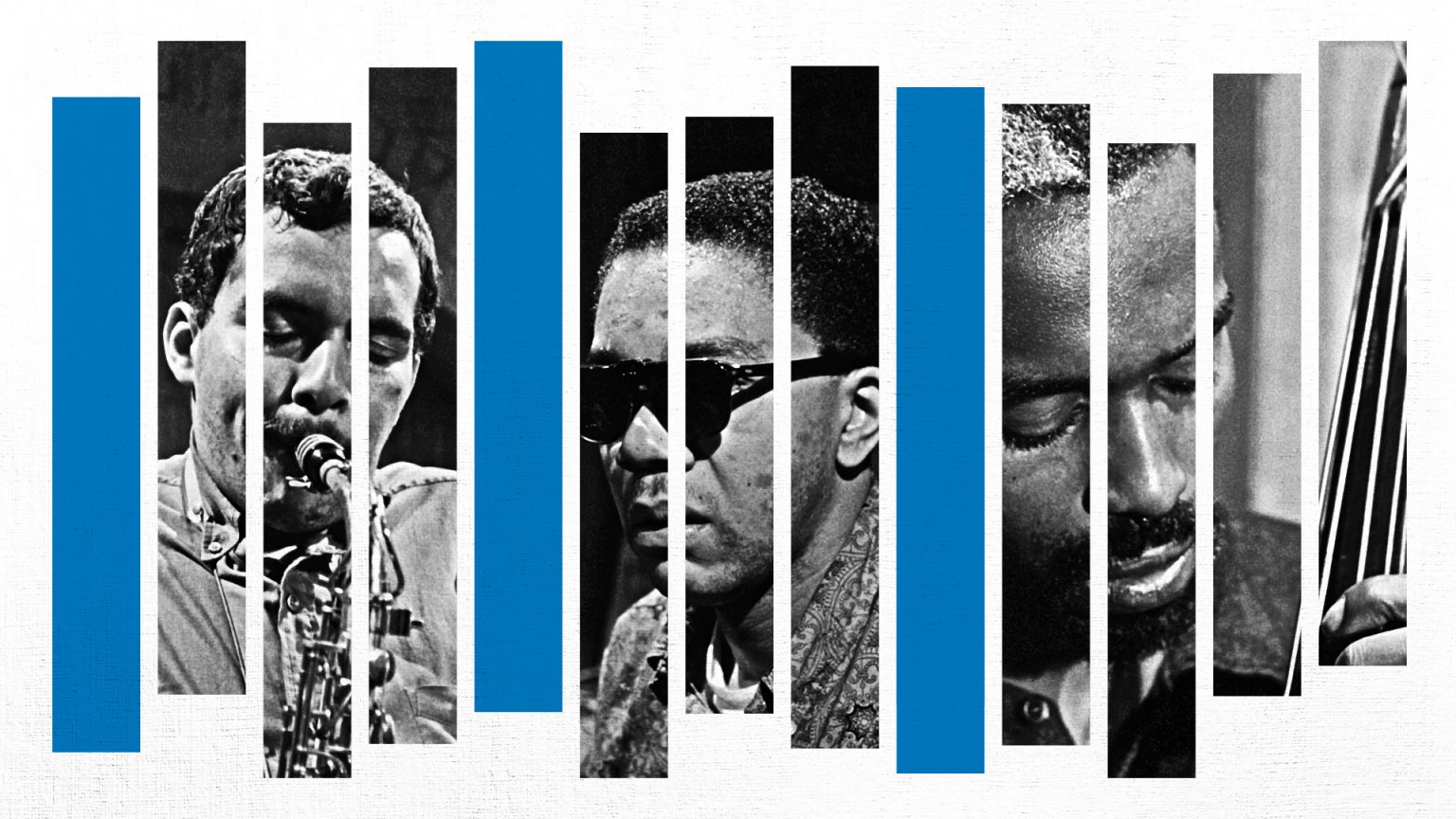In Shirley Clarke’s most celebrated film The Connection, there is a fruitful melding of her assorted artistic passions. There is an amalgamation of dance, music, and cinema—a formula that similarly swayed much of her work. Based on a 1959 play by Jack Gelber (who also wrote the script), Clarke’s 1962 movie spends the afternoon with a group of New York junkies as they waste away the day awaiting the arrival of their fix. The film is gritty, at times quite harrowing, often insightful, and uneasily humorous.
In fact, The Connection was a landmark in the burgeoning field of independent filmmaking, capitalizing, not without some contention (it was temporarily banned in New York State), on an increasing desire for unadorned realism. Like Gelber’s play, this film adaptation begins with a meta premise, wherein a team of filmmakers embarks on a documentary about drug addiction. The film-within-the-film is under the direction of the artistically affected Jim Dunn (William Redfield), who is enthusiastic, if rather pretentious and naïve, about the whole matter. Dunn abandons the project, leaving off-screen camera operator J.J. Burden (Roscoe Lee Browne) to assemble the existing footage into the form seen in the film.
Preliminary ringleader Leach (Warren Finnerty) directly addresses the camera, guiding the viewer around his “pad” and introducing a motley cast of characters, many of whom are played by actors and actual jazz musicians reprising their stage role (Redfield was one of two newcomers). Just as the members of this contentious congregation take their turns holding court and indulging in sundry commentary, so too do most of them drift in and out of consciousness, falling into stages of boredom, drowsiness, and a drug-addled delirium. An inventive, visceral, and engrossing feature, shot in the style of cinéma vérité, The Connection moves forward with an anxious agony as the characters, and by extension, the audience, await their next fix.
Taking place in a single room, Burden’s (or rather, Clarke’s) camera sweeps from character to character, pausing every now and then on an anecdotal monologue. The film’s enclosed stasis field yields a persistent, feverish sense of potential combustion; sudden bursts of belligerent energy leave one feeling correspondingly antsy and agitated, while a subtle tension rises as characters emerge from their stupor to make one pronouncement or another. Moments of painful silence are broken by external sounds like car horns blaring and people arguing on the street, an aural expansion of the isolation and restriction of this dingy dwelling. Other times, the muted stillness of the apartment will suddenly come alive as its assembled musicians emit a spontaneous on-screen soundtrack.
These instrumental respites are indicative of what is lost in the horrors of addiction. No sooner does one witness the vigor and talent of these droopy-eyed artists—cigarettes dangling from their languid mouths, intermittently expressive faces wavering as they compose a rapturous tune—than Clarke reveals the lethargy that threatens this fleeting kineticism. Aside from the inevitable antagonism between these cramped compatriots, The Connection seethes with a tangible discomfort, starting with the debilitating boil on Leach’s neck but quickly extending to the mental and physical ache of withdrawal—they are hunched over, grimacing in pain, pacing, scratching. While more middling representations of drug addiction were the norm at the time—Otto Preminger’s The Man with a Golden Arm (1955) is an exception, though even this daring release is undermined by pristine studio qualities and the star persona of Frank Sinatra—The Connection is notably audacious for its advanced depiction of people in the throes of addiction.
In addition to the film’s tactility—a quality that’s aided by a subtle set design, which communicates perpetual disorder—the most obvious formal conceit of The Connection is its meta-film structure. Beginning with Dunn barking directions as the men duck away from the camera before growing used to its presence, Clarke revels in every aspect of the filmmaking process—the hidden microphones, the erratic, meandering camera positions, and the sound that continues to roll as the screen goes black. The loose, twisty narrative fractures with varied stories, speeches, and seemingly impromptu pauses. Utilizing this Brechtian detachment, Clarke approaches reality in a way that moves beyond conventional documentary or fiction, eliciting a direct, unique engagement with the material.
It’s more than the fictitious Dunn could have hoped for, as preoccupied as he is with grandiose pronouncements and his awkward attempts to identify with the modish clique. His biggest fault, however—and it’s one that certainly can’t be leveled against Clarke—is his speciousness. Accused of exploiting the addicts, like “freaks,” Dunn fails to appreciate the despair and unending hopelessness of his subject. “Is this all there is to it?” he asks. “Just sitting around making jokes?” Perhaps it is. Perhaps that’s the point.
Watch Now: Shirley Clarke’s The Connection.




